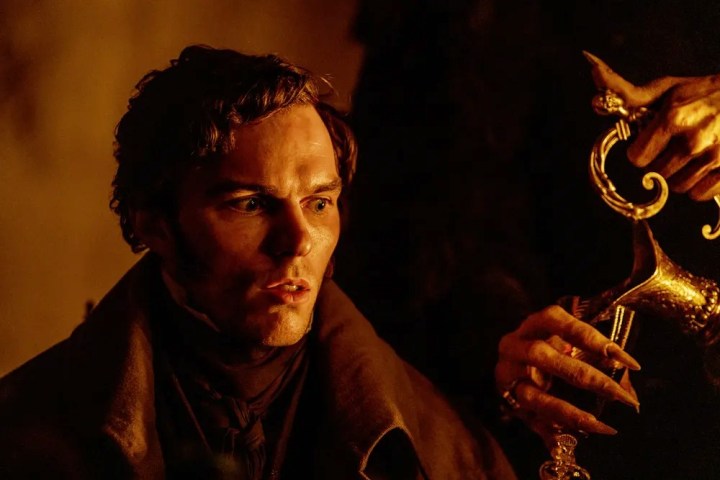
2024's Nosferatu: How a Bold Design Change Undermined a Horror Classic

vampire in dark coat with statue
Robert Eggers' 2024 "Nosferatu" surprised the box office by earning over $50 million during its Christmas release. While critically acclaimed, the film's reimagining of its iconic villain proves problematic for horror enthusiasts.
The original 1922 "Nosferatu" introduced Count Orlok (Max Schreck), whose rat-like appearance and memorable feeding scene became legendary in vampire cinema. Werner Herzog's 1979 remake preserved Orlok's distinctive look while modernizing the story's tone and violence, proving that maintaining the vampire's iconic appearance while updating other elements could work effectively.
Eggers' version, however, drastically changes Orlok's appearance. Though historically accurate to Transylvanian noblemen, the new design featuring a handlebar mustache and milky blue eyes fails to capture the original's horror. Bill Skarsgård's performance gets lost under heavy prosthetics, resulting in a villain that feels more like a special effect than a menacing presence.
The film's final scene, showing Orlok's sun-destroyed corpse embracing Ellen, particularly suffers from this design choice. What should be a poetic moment instead becomes a display of practical effects that breaks immersion.
While reimagining classics can work - as seen in Francis Ford Coppola's "Bram Stoker's Dracula" - Eggers' changes to Orlok's fundamental design removes what made the character uniquely terrifying for nearly a century. Despite the film's other strengths, this decision undermines its potential to join the ranks of great vampire films.
The change demonstrates that innovation in remakes should enhance rather than diminish what made the original effective. In pursuing historical accuracy, Eggers sacrificed the iconic horror that made Nosferatu endure for generations.
Related Articles

The Must-Watch Disney+ Documentary About Legendary Composer John Williams This January

